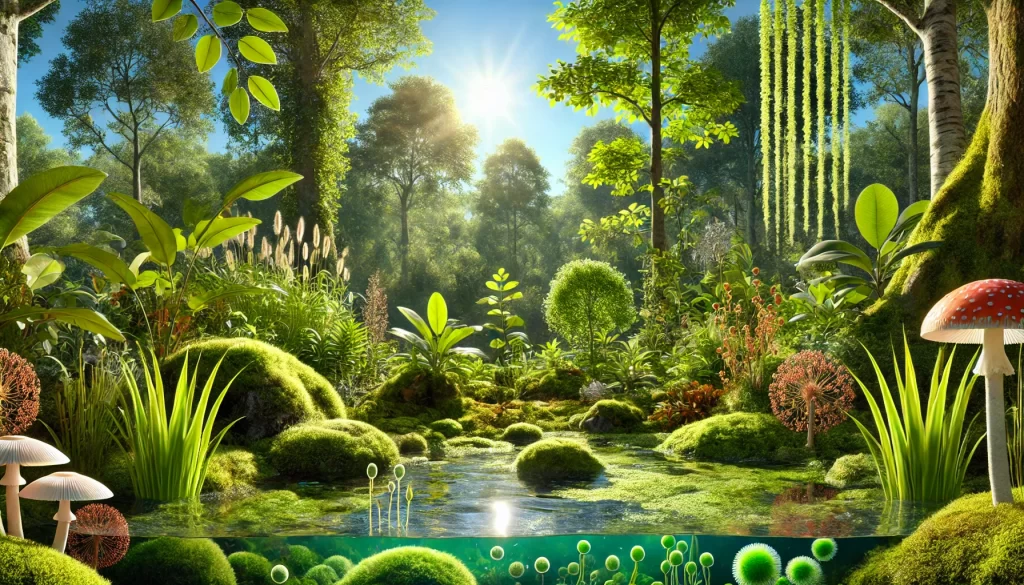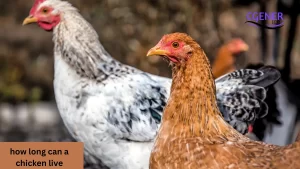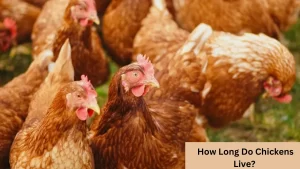Table of Contents
In the vast and diverse world of living organisms, some creatures have developed an extraordinary ability to make food. These organisms are nature’s incredible survivors, thriving in environments where others might struggle. The intriguing world of organisms that produce their own food, how they do it, and why this capacity is necessary for life on Earth will all be covered in this article. Let’s explore the most recent fascinating discoveries and advancements in this amazing facet of nature. An Organism That Produces Its Own Food: The Miracle of Life
An Organism That Produces Its Own Food: The Miracle of Life
The ability of an organism to make its own food is nothing short of miraculous. Known as autotrophs or producers, these organisms play a critical role in sustaining life on our planet. However, what does it mean to be a self-sufficient organism? Why is it so crucial, and how do they do it? This article will delve into these questions and explore the incredible processes that enable these organisms to survive and thrive. Biology solutions to questions about autotrophs can often be found on platforms like Brainly.com and Quizlet, which provide step-by-step answers. Unlike predators and decomposers, which depend on eating others, autotrophs profit from their capacity to manufacture food using simple chemicals like carbon dioxide and water. Flexi Answers and CK-12 Foundation often provide recommended textbook solutions, making it easier to understand the relationship between different types of organisms, whether they are producers or consumers. One organism eats another to gain energy, while autotrophs do not need to consume other life forms for sustenance. This unique ability allows autotrophs to create energy without the expense of external material, making them essential to the balance of ecosystems.
An Organism That Makes Its Food Is Called an Autotroph
Organisms that can produce their own nourishment through mechanisms like photosynthesis or chemosynthesis are known as autotrophs. Unlike animals or humans, which rely on consuming other organisms for energy, autotrophs use water, carbon dioxide, and sunlight to create food. This ability makes them foundational in ecosystems, providing energy and organic material for other organisms in the food chain.
The Best Examples of Autotrophs
The best examples of autotrophs are green plants. They can make their food through photosynthesis, which uses carbon dioxide, water, and sunlight. During this process, plants convert these simple substances into glucose, which provides energy for their growth and development. This ability allows green plants to serve as a vital food source for other organisms in the ecosystem.
Organism That Makes Its Own Food: The Role of Autotrophs in the Ecosystem
| Organism | Type of Food Production | Process Involved | Examples |
|---|---|---|---|
| Plants | Autotrophic | Photosynthesis | Oak tree, Sunflower, Grass |
| Cyanobacteria | Autotrophic | Photosynthesis | Blue-green algae, Spirulina |
| Algae | Autotrophic | Photosynthesis | Seaweed, Diatoms |
| Chemoautotrophic Bacteria | Autotrophic | Chemosynthesis | Thiobacillus, Nitrosomonas |
Autotrophs are the foundation of the food chain. Life as we know it would not be imaginable without them. They produce the energy that fuels all living creatures. Let’s look at how these organisms contribute to the balance and sustainability of ecosystems worldwide.
Photosynthesis: The Power of the Sun
Most autotrophs, such as plants, algae, and certain bacteria, use photosynthesis to create food. These creatures use a process called photosynthesis to turn sunlight into energy. Using chlorophyll, the green pigment in their cells, they capture sunlight and use it to transform carbon dioxide and water into glucose, a simple sugar that provides energy. As a byproduct, oxygen is released, which is necessary for other species, including humans, to survive.
Chemosynthesis: Life in Extreme Conditions
While photosynthesis is the most well-known method of food production among autotrophs, some organisms use a different process called chemosynthesis. Chemosynthesis occurs in environments without sunlight, such as deep-sea hydrothermal vents. Instead of using sunlight, these organisms rely on chemical reactions to produce energy. For example, certain bacteria can convert hydrogen sulfide, a toxic gas, into food. This process allows them to survive in harsh environments where other life forms cannot.
Examples of Organism That Makes Its Own Food

Autotrophs are found in nearly every environment on Earth, from lush forests to ocean depths. Here are some examples of organism that makes its own food and the incredible ways they do it.
Plants: The Most Common Autotrophs
Plants are the most well-known autotrophs. They use photosynthesis to convert sunlight into energy, providing food for themselves and oxygen for other organisms. From towering trees to tiny mosses, plants are essential to life on Earth. They form the base of the food chain, supporting herbivores, which in turn support carnivores.
Algae: Tiny Powerhouses of the Ocean
Algae, including seaweed, are another group of autotrophs. These tiny organisms are found in oceans, rivers, and lakes and are incredibly efficient at producing energy through photosynthesis. Despite their small size, algae play a considerable role in maintaining the balance of marine ecosystems. They make most of the oxygen we breathe and serve as the primary food source for many aquatic creatures.
Bacteria: Surviving Where Others Cannot
Certain bacteria are also autotrophs, Organism That Makes Its Own Food through chemosynthesis. These bacteria are often found in extreme environments, such as deep-sea vents, hot springs, and even within rocks. Despite the harsh conditions, these bacteria thrive, supporting entire ecosystems cut off from sunlight.
Also Read: CBT Technique Communicat: Unlocking Secrets to Empower Your Voice
Organism That Makes Its Own Food: The Importance of Autotrophs in Maintaining Life on Earth

Without autotrophs, life on Earth would be impossible. They are the primary producers, creating the energy that fuels all other organisms. Their ability to make their food allows ecosystems to function and thrive. Let’s explore why these organisms are so vital to life on our planet.
Supporting the Food Chain
Autotrophs are the base of the food chain, supporting all other life forms. Herbivores like cows, deer, and rabbits rely on plants for food. Carnivores like lions, wolves, and hawks rely on herbivores for energy. Without autotrophs, the entire food chain would collapse, leading to the extinction of countless species.
Producing Oxygen for Life
Through photosynthesis, autotrophs release oxygen into the atmosphere. This oxygen is essential for the survival of most living creatures, including humans. Without autotrophs, the Earth’s atmosphere would lack the oxygen needed to sustain life, making our planet uninhabitable.
Balancing Carbon Dioxide Levels
Autotrophs play a critical role in regulating the Earth’s carbon dioxide levels. During photosynthesis, they absorb atmospheric carbon dioxide, helping reduce greenhouse gas impact and combat climate change. This process is vital for maintaining a stable and healthy environment.
Understanding the importance of autotrophs and how they make their own food helps us appreciate the delicate balance that sustains life on our planet. As we continue to uncover nature’s secrets, we gain valuable insights into the incredible processes that allow life to flourish. By protecting and preserving these organisms, we ensure the survival of ecosystems and the continued prosperity of life on Earth.





